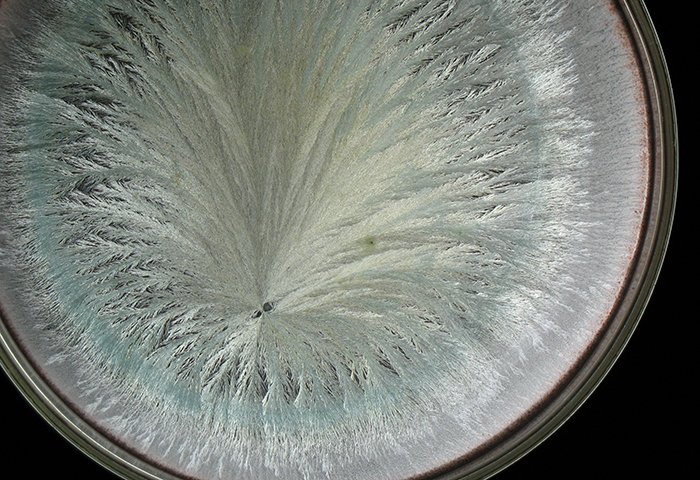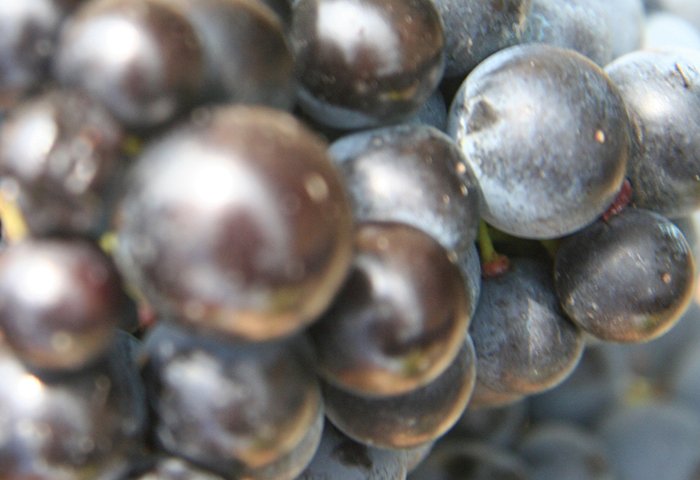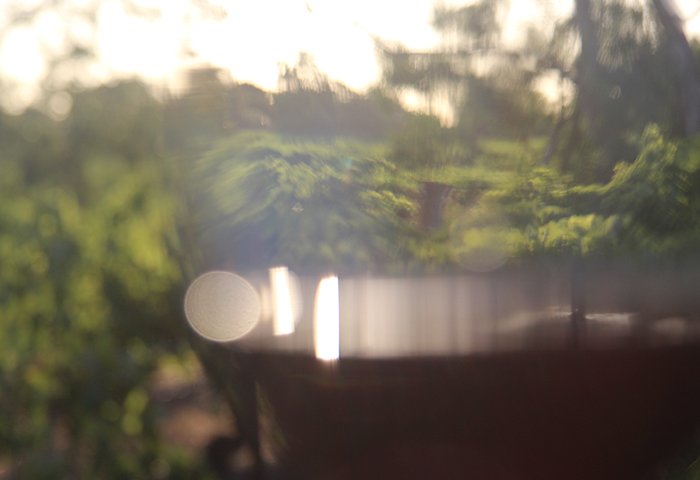The Life Within Wine
Reflection No. EP3
The sensitive crystallization method observes modifications in the molecular arrangement of plant extracts in reaction to copper chloride and is scientific evidence that wine is a living organism. The capacity of a plant to influence the crystallization depends on its vitality. The small spaces at the nucleus and the texture formed at the middle and rim of a crystallization reveal information about the balance, structure and aromatics of a wine.
The image shown here is of Clos Erasmus. The homogeneity of the texture, the symmetry and the small size of the nuclei show that this is a well-balanced aromatic wine of superior origin. The asymmetric shape of the spaces implies red fruits and complexity. The depth of the peripheral zone indicates a robust wine with soft tannins, and the long, graceful length of the spherulitic fanning suggests persistence. Lack of secondary crystallization confirms an absence of flaws or volatility. This is a well-crafted wine.
Wine is a continuum: The life force of the vine produces fruit that is transformed into a wine, still breathing, evolving. From the glass to the palate, energy commingles, cells split and transform. We drink it, our consciousness is fueled and enlivened, our senses more aware. This is the gestalt of wine. It asks us to be still and listen for a moment to the story that binds us all, the energy of life.
The crystallization photo was provided by Clos Erasmus.




